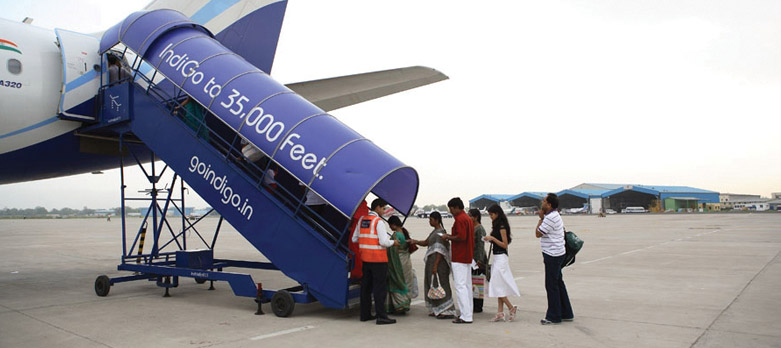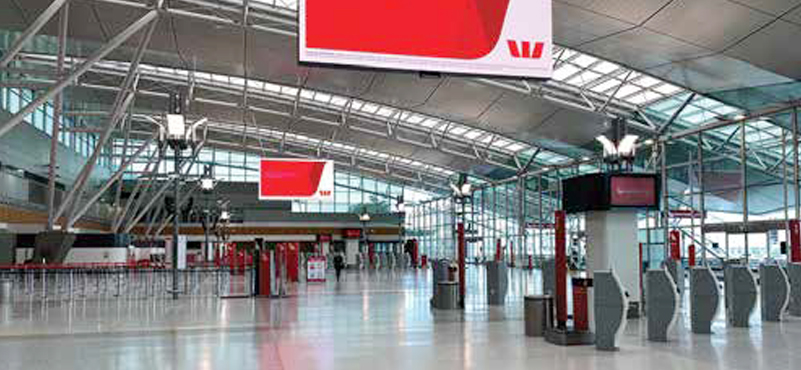Numerical growth notwithstanding, the upheaval in the Indian aviation market in the past ten years is quite a tale in itself. The airline run by a mighty corporate house which at one time was just inches away from the market leadership position went belly up. And another entity – a LCC – almost met the similar fate before the original promoter stepped in the scene again to divert it from the disaster route. His battle is still on. Not to forget, scores of regional carriers which came, saw the opportunity but ultimately fled realising that the game looks good only from the distance.
 Amidst such a scenario, Indigo’s meteoric rise almost appears out to be a fairy tale – too good to be true. Hardly given much of a chance ten years ago owing to its basic character of a LCC, the airline is a market leader in the country today, has a fleet size in the vicinity of three digit mark, is known for its on-time performance and has, by and large, stayed away from any financial troubles. Recently, it notched another distinction when it was enlisted at the domestic bourses with its IPO oversubscribed by 6.15 times. On the opening trading day, the share price of Indigo surged by 15 percent bringing smiles to those who have shown faith in the airline.
Amidst such a scenario, Indigo’s meteoric rise almost appears out to be a fairy tale – too good to be true. Hardly given much of a chance ten years ago owing to its basic character of a LCC, the airline is a market leader in the country today, has a fleet size in the vicinity of three digit mark, is known for its on-time performance and has, by and large, stayed away from any financial troubles. Recently, it notched another distinction when it was enlisted at the domestic bourses with its IPO oversubscribed by 6.15 times. On the opening trading day, the share price of Indigo surged by 15 percent bringing smiles to those who have shown faith in the airline.
Does it mark the beginning of Indigo 2.0 version? In terms of direction it will take and the larger ambitions it can afford to nurture? With a valuation of over $2 billion and over `3,000 crore of fresh funds raised, the Indigo story certainly promises to get more interesting. Following its successful IPO debut, the market is already inundated with speculations that major foreign carriers like Qatar may send feelers to the Indian carrier to pick up some stake and get into a strategic partnership. The market is also extensively guessing on the potential utility of mega 250 aircraft orders in the medium to long run given the fact that all of them can’t be absorbed in the Indian market. But going by their configuration, they can’t fly on long-routes either.
Now that Indigo has landed at Dalal Street too, each and every move of the company is going to be more minutely analysed and the market would expect more clarity in its response on several fronts. One popular theory is that the company has made most of the leaseback model (well, for others too this option existed) to keep its neck above the financial waters. Some sceptics are also pointing at the hefty dividend distribution regime which the company has pursued so far. For instance, the company’s net worth fell to a negative `139.39 crore at the end of June 2015 which has been attributed to the payment of interim dividend. As against this, the net worth of the company was `426.22 crore around March end this year.
These pointers notwithstanding, this clearly is Indigo’s moment of glory – the apt culmination of the first phase of its long journey which had begun in 2006 on a much lower scale. But considering its performance in the past, the stakes are too high for its future journey now that it is publicly enlisted entity.
The success of Indigo on the stock exchange also gives hope to other domestic carriers to seek public money. For instance, the turnaround at SpiceJet and possible next round of funding that it will require, could become easier. Go Air is privately funded and could go for enlisting. With a new Civil Aviation Policy in public domain, there is greater hope for airline connectivity at all three levels – international, national and also regional. It may not exactly be happy days yet, but the hope has certainly been kindled by the market leader, that has clearly been Indigo on all accounts.




































